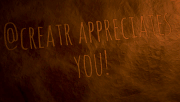Step One to Understanding Economics - Commentary on Bastiat's 2nd Sophism

If someone wanted to learn the fundamentals economics, the first thing I would point them towards is Bastiat's second sophism.
To understand ideas like economics, we need to be thinking about them with the right technique, but we also need to understand them from the perspective that led to that technique. Mises, in his tome, Human Action, best described the proper technique for economics: praxeology, a discipline founded by Auguste Comte. But Bastiat is one of the first and finest at helping us discover the perspective behind it.
Ideas come about first because of observation, and then the development of a methodology that allows us to understand or explain those observations. So to understand the technique which Mises laid out so well, we must understand the observations and ideas of economists that inform the methodology. These observations are the context, or perspective, with which we can more easily understand the application of the technique. In theory, we could just use praxeology to understand economics, but the process becomes clearer when informed by the perspective.
Many will point to Bastiat's That Which Is Seen, and That Which Is Not Seen, the inspiration for Henry Hazlitt's Economics in One Lesson, as the starting place for understanding economics. (I'll write a post on each of these at some point) They deal with a critical concept, that shouldn't be limited to just economics. They describe that there is more going on than just what we can observe.
To better understand an economic situation, we must consider those things that would have occurred if the situation had unfolded differently. Bastiat demonstrates the idea by describing what a shopkeeper might have done with the money needed to fix a broken window. The townspeople say that "at least the glassmaker has some work." But if the window hadn't been broken, the money may have gone to the tailor or the restaurateur. But while this is an important concept, it isn't the very first place I would point someone; that would be Bastiat's second sophism.
It's in this sophism that Bastiat establishes a truth that is at the very roots of praxeology. Humans have wants that they wish to satisfy, but standing between them and their wants are obstacles. Mises describes that "human action" is the activities that we take to overcome these obstacles. That humans act towards the achievement of goals is the fundamental axiom of praxeology. Bastiat's observations reveal that the reason humans act is to address the obstacles that stand between them and their goals.
Bastiat provides even further context by describing humans as naturally "destitute of everything." If a human were placed on an Earth empty of other people, they would be naked and alone. To do something as simple as eating, they would have to go through the obstacle of picking berries or some vegetation. One reason this bit of context is so vital to an understanding of economics is that it makes clear that the natural state of humanity is poverty. That shifts the question we should ask about poverty from "What makes someone poor?" to "What makes someone rich?"
Bastiat's interest in this sophism is to explain why some appear to place more value on the obstacles rather than the ends that they obstruct. To do this, he explains how obstacles are at the center of one of the building blocks of economies: the exchange. In societies, we aren't left entirely on our own in the face of these obstacles. There are some that we overcome ourselves, but in many cases, others help us overcome our obstacles. And in return for their assistance, we help them overcome their obstacles.
The reason we benefit more from the exchange, rather than trying to overcome every obstacle alone, is because of the advantages of division of labor. Division of labor makes it easier for obstacles to be overcome because of the skills, techniques, and technologies that are developed as a part of it.
But not every obstacle is equal. Certain obstacles are "more keenly felt," and when someone helps us overcome them, we help them with more obstacles of their own. In Bastiat's examples, this is why we are willing to give a doctor more of our assistance in overcoming obstacles depending on the severity of our illness. These differences in our feelings about obstacles are the source of prices.
This perspective, regarding the overcoming of obstacles and its role in exchanges, is a crucial element in reshaping the way people discuss economics and free markets in particular. A common criticism of "capitalism" is that it lacks a compassionate element or a sense that "we are all in this together." Critics complain that free enterprise's individualistic nature destroys community. But by understanding economics in this obstacle perspective, we can see that the opposite is true.
Free enterprise is not about the cold-natured individual working alone. It is about individuals working in ways that help others overcome the things that stand between them and their goals. It drives producers towards teamwork, building each other up, and fairness.
A curious matter is why so many don't see economic exchange as participation in this collaborative process of overcoming obstacles. I believe that money may play a role. For all the benefits of money as a tool, it seems to obscure this perspective. It might have been less efficient for me to trade a cow to someone building me a cart. But it did allow us to see that I was helping the builder with his need for milk and meat and he was fixing my transportation problem.
I hope that a cryptocurrency, or related tool, could help us regain some of this lost perspective. We might be able to track and show how we help each other overcome obstacles. If we could, it might change how we understand our participation in enterprise.
Bastiat goes on to explain that, as in the case with severity of illness, producers benefit when they overcome obstacles that are "more keenly felt," or more obstacles in general. This dynamic has caused people to wrongly view labor, by which we overcome obstacles, as the source of value. But that's a distorted view of what's occurring.
It is the goal that drives the value. The real goal is whatever the obstacle hinders our reaching. If more obstacles appear in front of a goal, we may still desire it, or we may abandon its pursuit altogether. It has become more expensive, but our desire for it hasn't changed. We would be more satisfied, both as individuals and as a society, if fewer obstacles were between ourselves and our goal.
But the mistaken perspective on obstacles led to economic thinkers like Adam Smith and Karl Marx making the mistake of presuming labor to be the source of value. But labor is a means to an end. And if there are fewer obstacles in the way of one end, perhaps as a product of mechanical innovation, then some of the labor is freed up to pursue a different end. If more obstacles appear, then labor must be taken away, and fewer ends are pursued. So the fewer obstacles present in society, the greater the number of ends pursued.
Governments, in both Bastiat's time and today, have a problem with still seeing labor as the source of value. And the actions of government create more obstacles between individuals and their ends. If the goal is "jobs," and the labor theory of value was true, then all government needs to do is place more obstacles between individuals and their ends. But because the end determines the value and not the labor, more government obstacles can often lead to people quitting the pursuit of a goal. And even if they succeed in pulling more labor into pursuit of a particular goal, they take it away from pursuit of another. So either way, they reduce the total ends available in society, and therefore the wealth. The more government places obstacles in the way, the richer producers appear to become, but the poorer we become as a society.
Check out the index for my commentaries on all of Bastiat's Sophisms
Photo by Ales Krivec on Unsplash
Thanks for the resteem, Creatr, and thanks for the post, Derickj!
I always looked at value as a combination of how badly we want something combined with how difficult it is to bring it to us.
That explains it simply and works well. Starving? You will pay me gold to eat. :)
It is that simple, and it's crazy how much we lose are ability to see it with all the noise surrounding it. Thanks for giving it a read
Government schools work very hard for years to program people to believe lies. :)
They do. Mediums like this will allow us to undo them over time.
Thanks for publishing this thoughtful and well written series on Bastiat.
I hope to encourage my followers to read it by Re-Steeming this entry...
😄😇😄

Thanks so much for reading it and re-steeming! I hope they find it worthwhile.
I did! Resteems are very powerful. I wish people did it way more often.